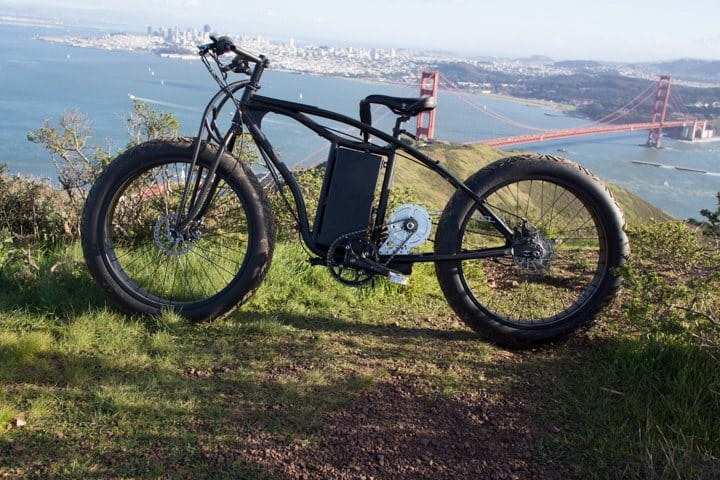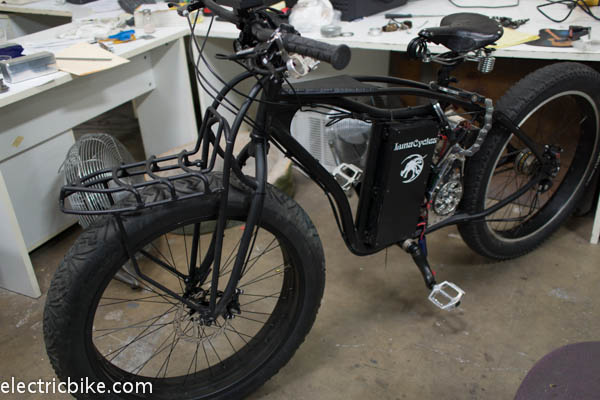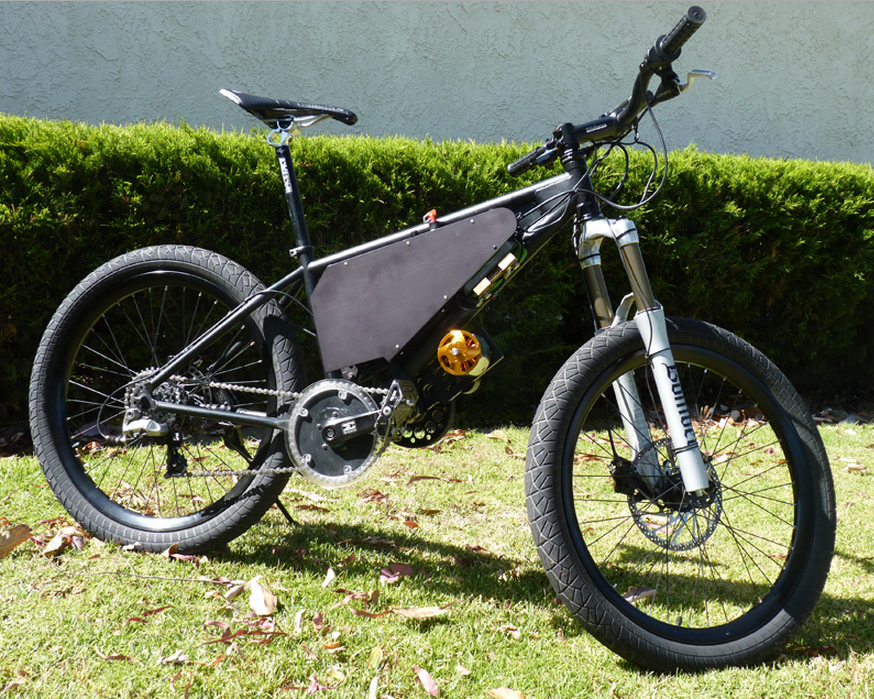MitchJi
10 MW
NOTE:
Posts from the Lightning Rod GNG thread have been relocated to this thread. Dedicated to the discussion of selecting the proper chain size for a given application.
Len*********************
I rode two of Eric's (Green Machine) mid-hub ebikes. Both used the crossbreak configuration that avoided the BB. One used a crossbreak stlye modified Mac, driving an Alfine IGH, was set-up for 2.5kw:

The other used an Astro 3215, driving an Rohloff IGH, was set-up for 5kw (the caption for the image states 3210 but I think he said the one I rode was a 3215):

The weakest links were not the chain, but the Alfine, and possibly the Rohloff, although it hadn't caused any problems at that point.
The 2.5kw Mac, with the mid-drive reduction felt pretty powerful , but the 5kw Astro was a even more fun
, but the 5kw Astro was a even more fun  .
.
Posts from the Lightning Rod GNG thread have been relocated to this thread. Dedicated to the discussion of selecting the proper chain size for a given application.
Len*********************
Maybe you mean multi-speed bicycle chain, rather single speed bicycle chain?spinningmagnets said:I believe that 72V X 30A = 2200W is very close to the max you can run through a derailleur with bicycle chain. Using more power is clearly possible, but wearing out the bicycle-grade chain and sprockets very fast, and sometimes breaking things is not a good system design. Nothing else on the market is close to what this kit will provide. The freewheeling bottom-bracket crankset is also another link in the power-limit. Since this motor can provide 2,200W all day without melting down, looking for a bigger motor is not needed for 2,200W.
Lukes Deathbike ran a single-speed left-side drive that used a #428 chain (and a large motor), that is the next step up. The GNG "Big Block" motor's stator has twice the width (and twice the copper mass) compared to the standard GNG motor, so I feel safe in suggesting that the Big Block should handle 60A well. That is not bicycle chain territory, and derailleurs are just not up to surviving that. The LightningRods jackshaft sprocket/pulley parts are reconfigurable for a variety of projects.
I rode two of Eric's (Green Machine) mid-hub ebikes. Both used the crossbreak configuration that avoided the BB. One used a crossbreak stlye modified Mac, driving an Alfine IGH, was set-up for 2.5kw:
The other used an Astro 3215, driving an Rohloff IGH, was set-up for 5kw (the caption for the image states 3210 but I think he said the one I rode was a 3215):
Oh and here is one with an air cooled Astro 3210 running through a Rohloff 14 speed...47mph top speed.
The weakest links were not the chain, but the Alfine, and possibly the Rohloff, although it hadn't caused any problems at that point.
The 2.5kw Mac, with the mid-drive reduction felt pretty powerful


